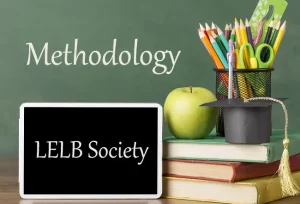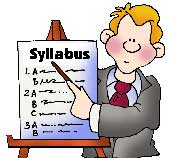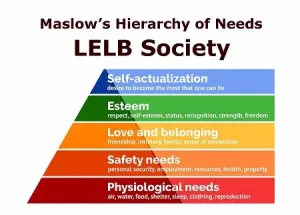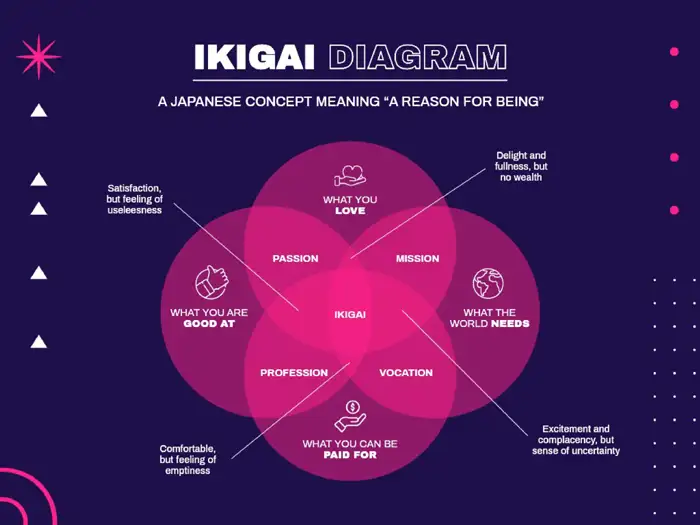Learner-centered curriculum: a recipe for humanizing language teaching and learning on how to practice humanistic education in the domain of second language acquisition
Author: Dr. Mohammad Hossein Hariri Asl
Video of learner-centered curriculum
Abstract
A language curriculum needs to consider the learners’ needs and interests. This is only in this way that the learners can develop an active role and do their best in the process of language learning. This study is aimed at shedding some light on the significance of humanizing language curriculum, with a particular emphasis on learner-centered curriculum. Throughout the study, it became clear that a learner-centered curriculum can increase the level of autonomy on the part of the learners so that they are centralized (as opposed to being marginalized) in language mastery. That is to say, they can take charge in their own learning through active participation. In fact, after the implementation of needs analysis and critical pedagogy, in a negotiated manner between the teacher and the learners, an optimum level of intrinsic motivation is engendered in the learners to do away with student enslavement and replace it with learner-centeredness.
Learner-centered curriculum
Rogers’s (1951, as cited in Brown, 2000) humanistic psychology under the title of ‘client-centered therapy’ has more of an affective focus than a cognitive one and is said to fall into the perspective of a constructivist view of learning.
According to Olafson (nd, as cited in Hook, Kurtz & Todorovich, 1975):
In one sense what humanism has to tell us about ourselves-that we are capable of discourse, that we stand in a certain relation to our past and to our future, that we are social and moral beings and, as such, capable of choice and action-is nothing new, for these are all features of our commonsense conception of ourselves (p. 59).

Nunan (1999) defines humanism as:
The philosophical approach known as humanism has found expression in education in approaches that place the experiences and feelings of the student at the center of the learning process. It thus provides the philosophical underpinning for learner-centered approaches to second language learning and teaching (p. 308).
Humanistic education seeks to teach both the intellectual and the emotional dimensions of the students (Moskowitz, 1981). In this article, it has been attempted to deliberate on the significance of humanized language curriculum with a special emphasis on learner-centered curriculum.
According to Williams and Burden (1997), “Humanistic approaches emphasize the importance of the inner world of the learner and place the individual’s thoughts, feelings and emotions at the forefront of all humans development” (p. 30).
Humanizing language curriculum

The best introduction to humanistic learning within language education is Stevick (1997, as cited in Nunan, 2003). He believes that particular classroom techniques matter less than establishing the right emotional climate for the learners.
According to Stevick (1990), among different language methods and approaches, Community Language Learning (CLL) seems to be the very epitome of humanistic education. In fact, Curran’s CLL is basically concerned with students’ personal feelings, social relations, self-actualization, and the realization of intellectual potential.
According to Curran (1972, as cited in Larsen-Freeman, 2000), “A language counselor does not mean someone trained in psychology; it means someone who is a skillful understander of the struggle students face as they attempt to internalize another language” (p. 89).
As Nunan (1988) has stated, criticism of early needs analysis work resulted in a change of emphasis, with a greater focus on the collection and implementation of subjective information in syllabus design. This shift of emphasis reflected a trend towards a more humanistic approach to education. In this response, Nunan (1988) maintains:
Humanistic education is based on the belief that learners should have a say in what they should be learning and how they should learn it, and reflects the notion that education should be concerned with the development of autonomy in the learner (p. 20).
Ellis (2003) has elaborated on the humanistic principles of education in this way:
Humanistic principles of education emphasize the achievement of students’ full potential for growth by acknowledging the importance of the affective dimension in learning as well as the cognitive. Humanistic approaches encourage learners to recognize their feelings and put them to use by caring for and sharing with others, thereby increasing their own self-esteem and motivation to learn (p. 31).
One of the humanistic education models is the humanities curriculum project. According to Stenhouse (1971), the humanities curriculum project has been exploring the problems of teaching in the area of controversial issues through producing appropriate teaching materials and experimented methods based on the students’ needs and wants. Stenhouse’s Humanities Curriculum Project (1967-72, as cited in Burns, 1999) had a major impact on the acceptability of action research as well as on the development of the concept of the teacher as researcher.
Learner-centeredness
Learner-centered curriculum, according to Richards (2001), stresses the individual needs of learners, the role of individual experience, and the need to develop awareness, self-reflection, critical thinking, learner strategies and other qualities and skills that are considered to be significant for learners to develop.
Graves (2000) defines learner-centered curriculum as:
…development of a community of learners who support each other’s learning process; emphasis on cooperation in place of competition; student participation in course content, process, and assessment- use of feedback as a means of course evaluation (p. 44).
Marsh (1986, p. 201) points out that the issue of learner-centered curricula reappears every decade or so and can refer to any of the following:
- Learning through practical operation or doing
- Laissez-faire, that is no organized curricula at all but based on the momentary interests of the learners
- Individualized teaching and learning
- Creative self-expressions by students
- Practically oriented activities directed towards the needs of society
- A collective term that refers to the rejection of teaching-directed learning

According to Brown (2007), learner-centered instruction includes:
- Techniques that focus on or account for learners’ needs, styles, and goals
- Techniques that give some control to the student (group work or strategy training, for example)
- Curricula that include the consultation and input of students and that do not presuppose objectives in advance
- Techniques that allow for student creativity and innovation
- Techniques that enhance a student’s sense of competence and self-worth (p. 52).
Breen and Littlejohn (2000) propose that a process syllabus should be put to use with the intention of implementing a learner-centered curriculum for a variety of reasons including:
- It transfers part of the responsibility for the design of the course onto the learner.
- It provides a mechanism for meeting differing needs of diverse students within the same overall class structure.
- It helps students to develop the skills they need to continue learning on their own after the course is finished (p. 220).
McLaren (2004) believes that in a learner-centered curriculum, the students are considered the center of the teaching and learning processes. Consequently, the communicative situations proposed must satisfy their needs and interests and should be related to their personal experiences. Thus, connections are established between what is taught and the linguistic and sociolinguistic knowledge that the students already possess.

A series of interventions conducted by Moskowitz (1981, 1999, as cited in Rossiter, 2003) with high school second and foreign language students reported positive correlations between the use of humanistic exercises and students’ attitudes towards language learning, their classmates, and themselves.
Nunan and Lamb (nd, as cited in Hall & Hewings, 2001) believe that language programs should have twin goals: language content goals, and learning process goals. If these two goals are achieved, we can claim that the program is characterized as being learner-centered.
Clarke (1989, as cited in Harwood, 2010) suggests that a learner-centered curriculum can be fostered by getting learners to adapt materials for their own or other classes. This will lead to enhanced interest on the part of the learners as a shift in their roles from “language receiver to collaborator, from assimilator to knower” (p. 135), since through adapting and designing new tasks, learners become experts in those areas and are then able to transmit their knowledge to others.
In a learner- centered curriculum, information by and about learners is built into every stage of the curriculum process, including, planning, implementation and evaluation, which per se requires the adoption of new roles by all those involved in curriculum processes, but particularly on the part of teacher and learners (Nunan, 1989).
Curriculum planners who wish to provide a learner-centered curriculum will devise processes for systematically revising the curriculum through regular monitoring and evaluation. This process might include frequent surveys of student and staff opinions, analysis of test scores, and review of instructional materials (Aydelott, 1995).
Negotiated curriculum
The Negotiated Syllabus derives naturally from a confluence of four important overlapping streams of applied linguistics and educational thinking, these being: (1) the largely North American experimentation with a variety of humanistic methodologies for an ESL environment (for example, Curran, 1972; Stevick, 1976); (2) the British EFL emphasis upon needs analysis as the basis for a Notional or Communicative syllabus, with specific purposes in mind (for example, Richterich, 1972; Richterich & Chancerel, 1977, 1980; Munby, 1978); (3) the general increase in research into issues related to learner individualization and autonomy (for example, Altman, 1972; Disick, 1975), and (4) the closely related investigations into the nature of learner strategies in the language learning process (for example, Naiman, Frohlich, Stern & Todesco, 1978; Candlin & Murphy, 1987; Wenden & Rubin, 1987; as cited in Clarke, 1991).
According to Nation and Macalister (2010), parts of the curriculum design can be negotiated between the teacher and the learners. This may include negotiation of classroom activities, some of the goals of the course, and some assessment procedures. This negotiation is a kind of evaluation with immediate effects on the course.

Clarke (1991) sees the interest in negotiated syllabuses arising from humanistic methodologies like community language learning which are very learner-centred, from needs analysis which focuses on learners’ needs, from work in individualization and learner autonomy, and from learner strategy research which sees the learner playing a central role in determining how the language is learnt. These are clearly strong reasons for having a negotiated syllabus.
A functional-notional curriculum, as a humanistic approach, has taken cognizance of the basic needs of all human beings. It makes provision for teaching the appropriate language needed at the five levels of human needs recognized by most psychologists (Maslow, 1970, as cited in Finocchiaro & Bramfit, 1983), beginning with the need for survival to the most elevated need of man, that is, the need for self-actualization.

As a matter of fact, negotiated curriculum ought to be conducted through a more explicit exploration of cross-cultural issues and greater learner involvement in decision making concerning their learning (Willis & Willis, 1996).
Teachers wishing to humanize the classroom experience are supposed to treat students as individuals, patiently encourage self-expression, seriously listen to learner response, provide opportunities for learning by doing, and make learning meaningful to students in the here and now (Eyring, nd, as cited in Celce-Murcia, 2001).
Learner autonomy
According to Moskowitz (1981), by dint of personalized communication techniques, students are provided with ample opportunities to learn about themselves and their classmates. During this process of sharing, students would be motivated to participate and would develop understanding and acceptance of their classmates, thus increasing their cohesiveness and their attitudes towards learning the target language.
In terms of learner autonomy and preferences, Lightbown and Spada (2006) argue:
When learners express a preference for seeing something written or spending more time in a language laboratory, we should not assume that their ways of working are wrong, even if they seem to be in conflict with the pedagogical approach we have adopted. Instead, we should encourage learners to use all means available to them (p. 59).
Holec (1987, as cited in Cook, 2008) states, “Learners gradually replace the belief that they are consumers of language courses with the belief that they can be producers of their own learning program and that this is their right”.
Needs analysis
Among various learner-centered methods, needs analysis has deliberately introduced what are called affective-humanistic activities involving the learner’s wants, needs, feelings, and emotions (Kumaravadivelu, 2006).

Needs analysis is viewed from three different perspectives: (1) language proficiency, (2) psychological-humanistic, and (3) specific purposes (Brindley, 1989, as cited in Johnson, 1989). The psychological-humanistic perspective emphasizes learners’ affective and psychological needs which are seen as a gap between a current and a desired psychological state of confidence, motivation or awareness.
Humanistic psychology, according to Patterson (1977) is a concept that “focuses upon the experiencing person and his distinctively human qualities, choices, creativity, valuation, dignity, worth, and the development of human potentials”.
Critical humanism
Critical humanism is an educational philosophy through which many teaching strategies have been successfully developed. In this response, Nemiroff (1992) maintains:
Its inherent respect for individuals’ expertise regarding their own lives should guarantee that all learners will respond to its challenge with honest reflection and that they receive support in this process (p. 192).
Humanizing coursebooks

Tomlinson (2003) criticizes current coursebooks for solely concentrating the linguistic and analytical aspects of language learning and failing to tap the human being’s potential for multidimensional processing. That is, they make insufficient use of the learners’ ability to learn through doing things physically, to learn through feeling emotion, to learn through experiencing things in the mind. They don’t acknowledge that, for human beings, the most important factor in learning is affect (Arnold, 1999; Schumann, 1999, as cited in Tomlinson, 2003).
In order to achieve effective and durable learning, language learners need to relax, feel at ease, develop self-confidence and self-esteem, develop positive attitudes towards the learning experience and be involved intellectually, aesthetically and emotionally (Tomlinson, 1998). They also need to make use of their experience of life, their interests and enthusiasms, their views, attitudes and feelings and, above all, their capacity to make meaningful connections in their minds.

According to MacIntyre and Gardner (1991, as cited in Hedge, 2000), teachers have both the power and the responsibility to counter the development of anxiety and stress by building self-confidence through positive early experiences, which is the greatest cause of anxiety, providing reassuring feedback, and promoting self-perception of developing proficiency.
There is at present a growing recognition of the central role that feelings play in the learning process. Coursebooks can involve the whole person by including activities and texts that connect to the students’ experiences, opinions and feelings, i.e. by humanizing them (Tomlinson, 2001, as cited in Tomlinson, 2008).
Criticism
Moral perfection may be necessary for intellectual perfection, but too much attention to it can also come into tension with contemplation (Stern, nd, as cited in Rorty, 1998).
In terms of the distinction between learning-centered and learner-centered approaches, Hutchinson and Waters (1987) argue:
The learners will certainly determine their own route to the target and the speed at which they travel the route, but that does not make the target unimportant. In the learning process, then, there is more than just the learner to consider. For this reason, we would reject the term a learner-centered approach in favor of a learning-centered approach to indicate that the concern is to maximize learning. The learner is one factor to consider in the learning process, but not the only one. Thus the term: learner-centered would for our purpose be misleading (p. 72).
It is important to note that a process curriculum, as discussed earlier, is rather elusive to achieve because the demands it makes on teacher competence are huge. Furthermore, assessment is difficult given the aspects of predetermined outcomes. Finally, Hirst (1975, as cited in White, 1988) argues that it is still concerned with ends, even if they are not specified in a behavioral manner.

A large number of studies show a weak relationship between learners’ beliefs and their proficiency level. According to Ellis (2008), “When learners hold a particular belief, there is no guarantee they will act on it” (p. 703). However, according to Horwitz (1985, 1987, 1988, as cited in Dörnyei, 2005), there is a certain amount of stability about learner’s beliefs that would justify their classification as ID variables. In this response, Horwitz (1999) declares, “Understanding learner beliefs about language learning is essential to understanding learner strategies and planning appropriate language instruction” (p. 557).
In terms of teacher’s failure in understanding learners, Stevick (1996, as cited in Arnold, 1998) states, “Alongside linguistic meanings are personal meanings: how the activity relates to each learner’s immediate purposes, overall objectives, loyalties, self-image, emotions and the like” (p. 253).
Conclusion
On the significance of humanizing language curriculum, Widdowson (2003) believes:
Teaching should not proactively direct the learning process but should reactively respond to it. In this view, it is not now teacher authority but learner autonomy that is the essential determining factor in deciding what should go on in classroom (pp. 142-143).

For Stevick (1980, as cited in Gadd, 1998), humanism is based on the desire of every student and every teacher to be an object of primacy in a world of meaningful action. He therefore believes that it is essential for teachers to take into serious consideration what goes on inside and between their students. He advises teachers to get to know their students’ psychology, treating each of them as an ordinary person, a cordial, interested fellow human being, since by doing so, they will learn about their students’ attitudes to learning, and be able to modify their teaching appropriately.
References
- Arnold, J. (1998). Towards more humanistic English teaching. ELT Journal, 52(3), 235-242. doi:10.1093/elt/52.3.235
- Aydelott, J. R. (1995). Foreign language curriculum organization. Forum, 33(1).
- Barrios, M. L., Debat, E. V., & Tavella, G. (2008). Materials in use in Argentina and the Southern Cone. In B. Tomlinson (Ed.), English language learning materials: A critical guide (pp. 300-316). London: Continuum.
- Breen, M. P., & Littlejohn, A. (2000). Classroom decision-making: Negotiation and process syllabuses in practice. Cambridge: Cambridge University Press.
- Brown, H. D. (2000). Principles of language learning and teaching. White Plains, NY: Pearson Education, Inc.
- Brown, H. D. (2007). Teaching by principles: An interactive approach to language pedagogy (3rd Ed.). White Plains, NY: Pearson Education, Inc.
- Burns, A. (1999). Collaborative action research for English language teachers. Cambridge: Cambridge University Press.
- Clarke, D. F. (1991). The negotiated syllabus: What is it and how is it likely to work? Applied Linguistics, 12(1), 13-27. doi:10.1093/applin/12.1.13
- Cook, V. (2008). Second language learning and second language teaching. London: Hodder Education, Inc.
- Dörnyei, Z. (2005). The psychology of the language learner: Individual differences in second language acquisition. New Jersey: Lawrence Erlbaum Association, Inc.
- Ellis, R. (2003). Task-based language learning and teaching. Oxford: Oxford University Press.
- Ellis, R. (2008). The study of second language acquisition. Oxford: Oxford University Press.
- Eyring, J. (2001). Experiential and negotiated language learning. In M. Celce-Murcia (Ed.), Teaching English as a second or foreign language (pp. 333-344). Boston: Heinle & Heinle.
- Finocchiaro, M., & Bramfit, C. (1983). The functional-notional approach: From theory to practice. Oxford: Oxford University Press.
- Gadd, N. (1998). Towards less humanistic English teaching. ELT Journal, 52(3), 223-234. doi:10.1093/elt/52.3.223
- Graves, K. (2000). Designing language courses: A guide for teachers. Boston, MA: Heinle and Heinle Publishers.
- Hall, D. R., & Hewings, A. (2001). Innovation in English language teaching: A reader. London: Routledge.
- Harwood, N. (2010). English language teaching materials: Theory and practice. Cambridge: Cambridge University Press.
- Hedge, T. (2000). Teaching and learning in the language classroom. Oxford: Oxford University Press.
- Hook, S., Kurtz, P., & Todorovich, M. (1975). The philosophy of the curriculum: The need for general education. Buffalo, NY: Prometheus Books.
- Horwitz, E. K. (1999). Cultural and situational influences on foreign language learners’ beliefs about language learning. System, 27(4), 557-576. doi:10.1016/S0346-251X(99)00050-0
- Hutchinson, T., & Waters, A. (1987). English for specific purposes: A learner-centered approach. Cambridge: Cambridge University Press.
- Johnson, R. K. (1989). The second language curriculum. Cambridge: Cambridge University Press.
- Kumaravadivelu, B. (2006). Understanding language teaching: From method to postmethod. New Jersey: Lawrence Erlbaum Associates, Inc.
- Larsen-Freeman, D. L. (2000). Techniques and principles in language teaching (2nd Ed.). Oxford: Oxford University Press.
- Lightbown, P. M., & Spada, N. (2006). How languages are learned. Oxford: Oxford University Press.
- Marsh, C. J. (1986). Curriculum: An analytic introduction. Sydney: Novak.
- McLaren, N. Y. (2004). The foreign language curriculum. Madrid: University of Granada.
- Moskowitz, G. (1981). Effects of humanistic techniques on attitude, cohesiveness and self-concept of foreign language students. Modern Language Journal, 65(2), 149-157. doi:10.2307/325593
- Nation, I. S. P., & Macalister, J. (2010). Language curriculum design. New York: Routledge.
- Nemiroff, G. H. (1992). Reconstructing education: Towards a pedagogy of critical humanism. New York: Greenwood.
- Nunan, D. (1988). Syllabus design. Oxford: Oxford University Press.
- Nunan, D. (1989). Designing tasks for the communicative classroom. Cambridge: Cambridge University Press.
- Nunan, D. (1999). Second language teaching and learning. Boston, Massachusetts BM: Heinle and Heinle Publishers.
- Nunan, D. (2003). Practical English language teaching. New York: McGraw-Hill Companies, Inc.
- Patterson, C. H. (1977). Foundations for a theory of instruction and educational psychology. New York: Harper & Row.
- Richards, J. C. (2001). Curriculum development in language teaching. Cambridge: Cambridge University Press.
- Rorty, A. O. (1998). Philosophers on education: New historical perspectives. London: Routledge.
- Rossiter, M. J. (2003). The effects of affective strategy training in the ESL classroom. TESL-EJ, 7(2).
- Stenhouse, L. (1971). The humanities curriculum project: The rationale. Theory into Practice, 10(3), 154-162. doi:10.1080/00405847109542322
- Stevick, E. W. (1990). Humanism in language teaching: A critical perspective. Oxford: Oxford University Press.
- Tomlinson, B. (1998). Materials development in language teaching. Cambridge: Cambridge University Press.
- Tomlinson, B. (2003). Developing materials for language teaching. London: Continuum.
- White, R. V. (1988). The ELT curriculum: Design, innovation and management. Oxford: Basil Blackwell, Ltd.
- Widdowson, H. G. (2003). Defining issues in English language teaching. Oxford: Oxford University Press.
- Williams, M., & Burden, R. L. (1997). Psychology for language teachers: A social constructivist approach. Cambridge: Cambridge University Press.
- Willis, J., & Willis, D. (1996). Challenge and change. Oxford: Macmillan Publishers Limited.
How to cite this article in APA Style?
Hariri Asl, M. H. (2023). Learner-centered curriculum for humanistic learning. LELB Society, https://lelb.net/learner-centered-curriculum-humanistic-learning/



